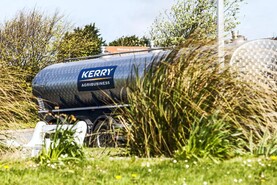With cows housed for the past few months on hard concrete or slats, there can be a build-up of slurry where cows are standing, the result of which can be an increased incidence of lameness.
This can be caused by slurry heel or digital dermatitis, among other issues. Mobility scoring can be a useful tool to allow for the early identification of cows that have lameness issues. Early identification is key, in combination with a comprehensive foot-bathing programme to prevent lameness becoming prominent on the farm.
While mobility scoring is predominately carried out in dairy herds, it can also be useful for suckler farmers to identify problem cows.
With larger herds and larger milking platforms developing on many farms, the distance that cows have to walk to and from the parlour continues to grow.
As cows begin to get out to pasture, spring is a good time to keep an eye on the mobility of cows to ensure that once cows are a few months at pasture you do not have pronounced lameness issues.
Two mobility scoring systems are operated around the world; cows are either scored from one to five or from zero to three. The zero-to-three system is what is commonly used in Ireland, so it is the one we will focus on here. The score that is given to cows is based on how they stand and walk. Ideally, cows should be looked at from the side and from behind as they walk on a flat surface to try to identify the lameness score.
Mobility score zero
A cow with a mobility score of zero is walking normally and maintaining the same speed as the rest of the herd, with a normal rhythm. Her stride length is even and her foot placement is even, with the track of her back foot following the track of the front foot. Even weight-bearing can be seen on all four feet. This cow does not require any further attention, only monitoring to ensure she remains at a score of zero. The cow will stand and walk normally, making long strides.
Mobility score one

A change in walking speed can be difficult to spot, as she will be able to maintain the same speed as the rest of the herd. She may be showing the early signs of lameness. Her strides may be shortened, with her rear foot missing the placement of her front foot. It is difficult to pick out exactly which foot is causing the issue and further inspection may be required. While she may stand with a flat back, she will often be walking with a slightly arched back. She may also keep her head down when walking. Routine foot bathing or trimming could benefit this cow and further observation is recommended to prevent her from progressing into a mobility score of two.
Mobility score two

The cow shown here is moderately lame and has a lameness score of two. She will walk slower than the rest of the herd and may often stop on farm roadways. She has a definite short stride, with the rear foot placement not falling on the front foot placement. The lame foot should be easily identifiable. While walking, her back will be arched and her head kept low. Further investigation is really required to find the cause of the lameness. Ideally, lifting the foot to help identify the cause of the problem, prior to treatment, is advised.
Mobility score three

This cow is severely lame. She will walk very slowly, stopping often. She will be unable to keep up with the majority of the herd. She will have shortened and very uneven strides, with the lame leg or legs easily identifiable. Very little, if any, weight will be placed on the lame leg. The back will be very arched and immediate treatment is required. When it comes to lameness issues on the farm, the aim really should be to prevent cows from getting to a score of three through adequate foot bathing and trimming. It is also important to keep walking areas clean and scraped to prevent a build-up of bacteria which can damage cows’ hooves.






 This is a subscriber-only article
This is a subscriber-only article












SHARING OPTIONS: